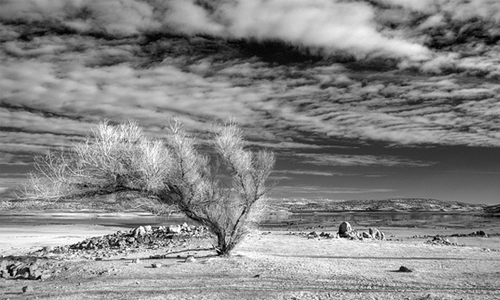

7. Wildlife Continues to Decline
It was probably the most depressing single bit of news of the year: In September, the World Wildlife Fund released a report concluding that in the 40 years between 1970 and 2010, the populations of birds, reptiles, amphibians and fish fell by 52 percent. “There is a lot of data in this report and it can seem very overwhelming and complex,” Jon Hoekstra, chief scientist at WWF, said in a statement releasing the findings. “What’s not complicated are the clear trends we’re seeing—39 percent of terrestrial wildlife gone, 39 percent of marine wildlife gone, 76 percent of freshwater wildlife gone—in the past 40 years.”
It’s no coincidence that even as wildlife populations have been cut in half, human numbers have nearly doubled; in 1970 there were 3.7 billion people on Earth, while today there are more than 7.2 billion. If you put those two trends on a graph, you get something resembling the muzzle of a blunderbuss—the prototype of the rifle. And blowing away the rest of nature is exactly what we’re doing.
The dire figures are a reminder that climate change isn’t the only threat to the planet’s health. Our sheer numbers and our relentless appetites are also chewing up the space for other critters, in the process diminishing the wonder and the beauty of Earth.
This isn’t a parochial inclusion just because I happen to live in California. The drought in California—now in its fourth year, and not even close to being resolved by some recent rains—is big news since the Golden State grows nearly half of the U.S.’s fruits, nuts, and vegetables, and is also the number one dairy state. What happens to California agriculture affects the whole country.
Make no mistake, the drought is climate-related. Or, in the words of scientists at Stanford: “The atmospheric conditions associated with the unprecedented drought currently afflicting California are “very likely” linked to human-caused climate change.” The California drought is important news because it’s (yet another) glimpse of things to come in a hotter, drier American West. And it’s an indicator of how an intensely concentrated agriculture sector is susceptible to climate shocks.
Currently California produces 99 percent of artichokes, 99 percent of walnuts, 97 percent of kiwis, 97 percent of plums, 95 percent of celery, 95 percent of garlic, 89 percent of cauliflower, 71 percent of spinach and 69 percent of carrots, as Slate reports here. In a world beset by an unstable climate, perhaps this isn’t the smartest idea. We need to rethink our strategy of putting all of our eggs—or, as the case may be, almonds—in one basket.
9. California Bans Plastic Bags
OK, maybe this one is parochial—but for good reasons. In September, Governor Jerry Brown signed a law making California the first state in the U.S. to ban plastic bags. The new law—which will go into effect in at large supermarkets in 2015 and corner stores in 2016—also puts in place a 10-cents-per-bag surcharge on paper bags or compostable bags offered to customers, creating an even greater incentive for shoppers to bring reusable bags to the store. (Customers buying groceries with food assistance won’t have to pay for the bags.)
Many grocery chains are in favor of the new law. “History was made today, and our environment and economy will be better for it,” Ronald Fong, president of the California Grocers Association, told CNN as the bill was signed. The plastics industry—not so much. Plastic bag makers have launched an effort to get an initiative on the state ballot to overturn the law, meaning this issue is still in flux.
Plastic bags—flimsy, ugly, prone to getting caught in the wind and fueling sophomoric musings—are like the mascot of an economy built on disposability. By banning them, California legislators took an important step toward stemming single-use plastics and made an important statement against wastefulness.
10. Wolves on the Move
Despite the disgusting predator-killing contests, and the continued hysterical fears, and the fact that they’ve been dropped from Endangered Species Act protection in many states, gray wolves continue to increase their range and find new places where they can thrive.
In July, the U.S. Fish and Wildlife Service confirmed that the famous wolf known as OR7 had sired three pups in southern Oregon after spending years roaming hundreds of miles looking for a mate. The revelation came just a month after the California Fish and Game Commission voted to add the wolves to the state’s endangered species list, meaning that if any members of OR7’s new pack cross the state line, they will enjoy additional protections.
Then, in November, a single gray wolf was spotted near the North Rim of Grand Canyon, in Arizona. DNA tests of its scat revealed the animal, which is wearing an inactive radio collar, came from the population of gray wolves in the Northern Rockies. Meaning the animal had walked some 450 miles down the spine of the continent.
Amazing. Or, I would dare to say, inspiring. The new wolf pack in Oregon and the lone wolf at the Grand Canyon are proof of that wild nature can recover and rebound from past wounds if only we humans will allow it. Hope springs eternal.
YOU MIGHT ALSO LIKE

 233k
233k  41k
41k  Subscribe
Subscribe 


